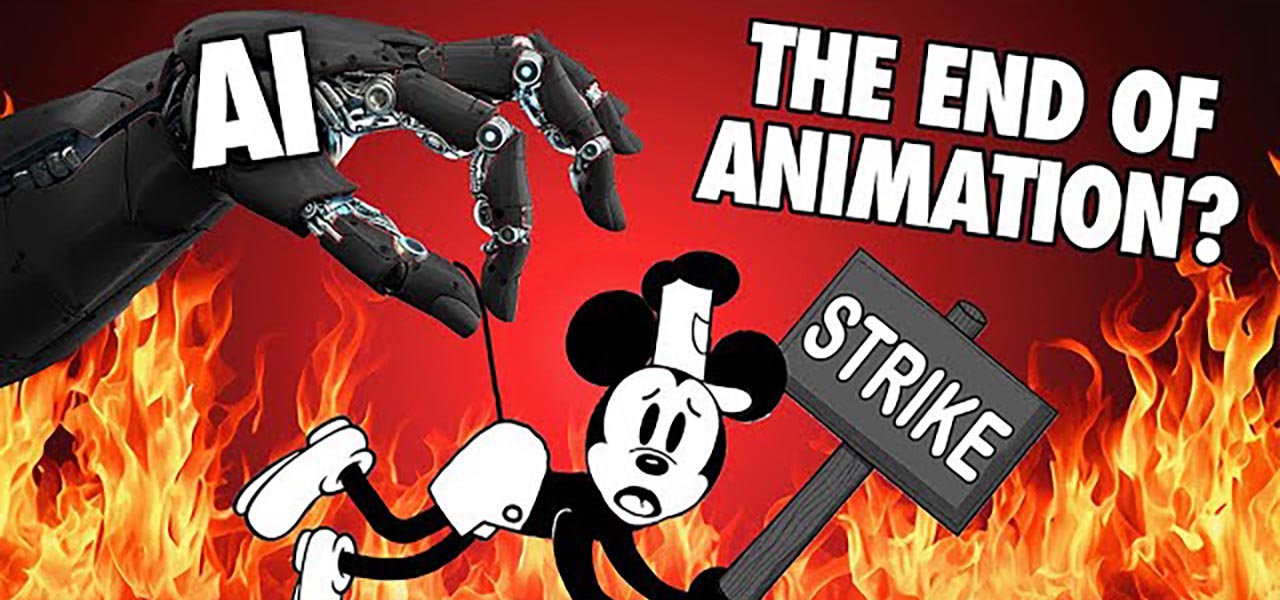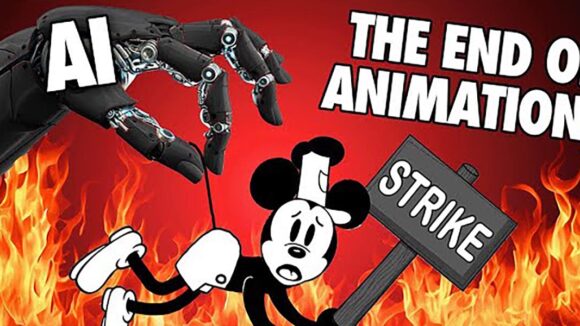

An Industry Worker Explains Why The U.S. Animation Industry Is Collapsing
Typically, if a Youtube video essay starts with a hook like, “The animation industry is on the brink of collapse and no one is talking about it,” you can be assured that the person who published it has no clue what they’re talking about. Happily, that’s not the case here. And unhappily, the industry is indeed experiencing some turmoil and uncertainty about its future.
Zach Mulligan, the person who put together this video, is an industry worker with experience at Dreamworks Animation, Scanline VFX, and The Jim Henson Company and has now started his own company ZOPStudios. In a brisk 25-minute video, he offers a concise argument for why the animation industry – and more specifically, the L.A. animation industry – is in trouble.
Mulligan identifies five reasons for the current industry instability. If you read Cartoon Brew regularly, you’ll no doubt be familiar with all of these reasons – and screenshots from our reporting is referenced frequently throughout the video. Nevertheless, it’s very helpful to see it compiled and contextualized in this format.
According to Mulligan, here are the main reasons why the animation industry is in a downward spiral:
1 – The streaming bubble has burst. Who would’ve thunk that people wouldn’t like subscribing to a half-dozen different streaming services. Everyone except apparently the people who run Hollywood. Further, as Mulligan points out, streaming isn’t even particularly profitable for the companies, with the possible exception of Netflix. “The economics of streaming are simply not as lucrative as theatrical releases,” Mulligan explained, “and so the increase in spending during the pandemic became a bubble and now the workers that were staffed up with false promises are feeling the repercussions.”
2 – Layoffs. The industry is downsizing as part of a deliberate strategy to rein in costs. Layoffs have become such a regular occurrence over the past couple years that we had to launch a layoff tracker just to make sense of what’s happening industry-wide. As Mulligan points out, studio executives at the top are often receiving bonuses for the cost-savings from these layoffs.
3 – Outsourcing. This is, of course, nothing new, but there has been a paradigm shift in recent years. Until recently, numerous studios produced all of their animated features in-house. Last year, Dreamworks announced that it would be increasing its use of outsourcing on features, while Walt Disney Animation Studios is shifting some of the production of Moana 2 to its Canadian subsidiary. This leaves Pixar as the only American studio that produces all of its animated features in the United States – a scenario that would have been unthinkable just five years ago.
4 – Mergers and acquisitions. The most obvious example here is Disney’s acquisition of 21st Century Fox, which resulted in the shuttering of Blue Sky Studios, but as Mulligan warns, the era of M&A is likely not over yet.
5 – Generative AI. We already know thanks to this recent study co-commissioned by The Animation Guild that tens of thousands of U.S. animation jobs are at risk of disruption with the incoming wave of AI-assisted production. Top-level creative work won’t be affected anytime soon, but rank-and-file production workers are at significant risk in the coming decades.
Mulligan identifies two ‘silver linings’ that give hope for the future. First, he identifies the rise of indie animation studios and their ability to create content that connects with fans in ways that polished committee-driven studio content can’t always achieve. And what of the artists who work in the industry? He explains that the best weapon industry workers have at the moment is The Animation Guild’s upcoming contract negotiations with the studios. These talks, explained Mulligan, are “the final chance we will ever get to keep these kind of jobs.”
Here’s a third reason to be hopeful. Animation is at this moment experiencing unprecedented global growth. The industry is booming on a global level with hundreds of thousands of new people joining our community – not just in established animation hubs, but in Latin America, in Southeast Asia, in the Middle East, in Africa. Animation is continually becoming a bigger part of the entertainment content landscape and the work that artists create will always triumph over the suits who try to exploit and make a quick buck from the industry. It may be little solace for those who are struggling, but today’s situation is in many ways a growing pain resulting from the craft’s rapid worldwide growth. There may be some ugly times ahead, but animation isn’t going anywhere.
What are your thoughts on the video?

.png)